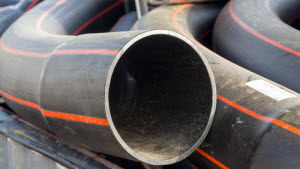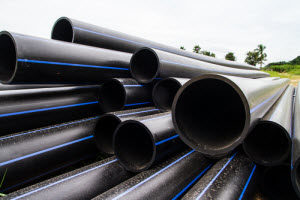As a facility manager, you’ve probably heard about the benefits of choosing a sustainable material like HDPE for your next project. Utilizing sustainable building materials like HDPE not only pushes you closer to LEED certification, but having these types of materials can also lower your maintenance costs. But when it comes to HDPE products, facility managers tend to ask what makes HDPE sustainable?
 We’ll gladly show you what makes HDPE sustainable and why you’d benefit greatly by using it in your next renovation or remodel project.
We’ll gladly show you what makes HDPE sustainable and why you’d benefit greatly by using it in your next renovation or remodel project.
How HDPE Is Sustainable
A variety of factors make HDPE a sustainable material that you can use in your facility, the major ones being the following:
- HDPE is made from recycled materials.
- HPDE contains between 25% and 100% pre-consumer material.
- Not only is HDPE sustainable by being made from recycled materials, but it’s also 100% recyclable.
Given that HDPE is made up of recycled material, it’s GREENGUARD Gold Certified, meaning that it’s an approved material to be used in schools and healthcare facilities. This certification requires stricter criteria, and HDPE makes the cut for its green construction.
Improving Air Quality
 One of the biggest advantages that HDPE brings to your facility is through helping your air quality. HDPE is impervious to humidity and moisture, which can be abundant in areas like the restroom or locker rooms. Most plastic and metal partitions or storage compartments located in an environment with constant moisture will not only begin to wear, but they also run the risk of growing mold. Because of HDPE’s solid plastic construction, mold won’t find a way to grow, allowing HDPE to remain unaffected and helping to keep your air quality high.
One of the biggest advantages that HDPE brings to your facility is through helping your air quality. HDPE is impervious to humidity and moisture, which can be abundant in areas like the restroom or locker rooms. Most plastic and metal partitions or storage compartments located in an environment with constant moisture will not only begin to wear, but they also run the risk of growing mold. Because of HDPE’s solid plastic construction, mold won’t find a way to grow, allowing HDPE to remain unaffected and helping to keep your air quality high.
Low-Cost Maintenance
Another major benefit of HDPE that you can add to the pros column is that it requires little maintenance. Not only does HDPE stand up to the elements, but it’s also a highly durable material. It can take a few hits and bumps and come out pretty much unscathed. Even graffiti doesn’t stand a chance against this solid plastic.
When it comes to maintaining your HDPE materials, you’ll be happy to know that it won’t cost you a lot of time or money. HDPE requires only a light cleaning now and then. The material doesn’t require repainting, which not only saves you more money, but it also won’t have a negative effect on your facility’s air quality due to the harmful VOC emissions.
On top of the lack of serious and involved maintenance, HDPE plastic can last for years, so you won’t be looking at a costly or involved replacement any time soon. HDPE pays for itself within two years due to the lack of costly maintenance and repairs that other materials would require.
Was this post informative for showing you what makes HDPE a sustainable building material? For more information, download Scranton Products’ eBook Sustainable Building Products: How to Make Your Facility Eco-Friendly from Top to Bottom.

 HDPE (high-density polyethylene) is a solid, strong plastic that has many applications when it comes to building materials. Some facility managers aren’t sure that HDPE provides a stronger construct than other plastics, but HDPE has been proven to be one of the more durable plastics on the market, making it a formidable opponent to other plastics that are available.
HDPE (high-density polyethylene) is a solid, strong plastic that has many applications when it comes to building materials. Some facility managers aren’t sure that HDPE provides a stronger construct than other plastics, but HDPE has been proven to be one of the more durable plastics on the market, making it a formidable opponent to other plastics that are available.